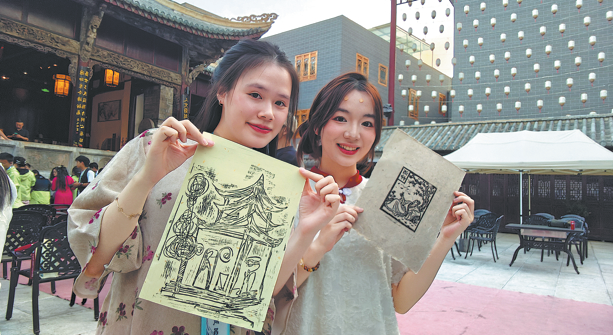Vietnamese students discover shared history and traditions


From Oct 13 to 19, the 7th Yunnan Overseas Students Cultural Exchange Week was held in Zhaotong and Kunming, Southwest China's Yunnan province. Over seven days, more than 40 students and teachers from China and Vietnam explored the region's rich history and diverse culture.
Among the participants was 20-year-old Vietnamese student Co Suy Xa, who had previously visited Yunnan during a school winter camp. Now a freshman at Yunnan University, Co returned to continue his studies.
"The rural lifestyle here reminds me of my hometown," Co said. He noticed local farmers drying corn on railings and cooking with firewood — practices also common in Vietnam. "These familiar scenes made me feel at home," he added.
For 22-year-old Thai Doan Phuong Anh, a Vietnamese student at Yunnan Normal University (YNNU), the exchange offered a chance to discover unexpected cultural similarities. "In Yunnan, people eat glutinous rice cakes just like in northern Vietnam," she said. "It made me realize how closely our two cultures are connected."
A highlight of the weeklong visit was the trip to the former site of the Zhaxi Conference in Zhaotong, a pivotal meeting during the Red Army's historic Long March (1934-36). The experience allowed the students to engage more deeply with the shared historical struggles between China and Vietnam.
"Although I had studied Chinese history before, I never fully understood its significance," Co said. "After the visit, I realized that, like Vietnam, China has endured many hardships in war. I now have a stronger sense of the mutual support that has long existed between our two countries."
This revelation resonated with many Vietnamese students. Nguyen Thi Ngoc, 21, from Honghe University in Honghe Hani and Yi autonomous prefecture of Yunnan province, noted that the relationship between China and Vietnam is often described as one of "camaraderie and brotherhood".
"The word 'comrade' reflects the shared ideology of our two communist countries, while 'brotherhood' represents the profound, supportive ties that unite us," Nguyen explained.
For Wang Yufei, a 22-year-old Chinese student at YNNU, the experience was just as meaningful.
During the visit, their guide drew parallels between China's Long March and Vietnam's fight for independence. "It gave me a clearer understanding of the historical foundation of our countries' bond," Wang said.
That same sense of unity was evident in the students' interactions. On the bus ride back from the site, Chinese and Vietnamese students sang together. "Even though some Vietnamese students weren't fluent in Chinese, they joined in enthusiastically. Music helped bridge our differences and bring us closer," Wang recalled.
In Zhaotong, the group also explored local art forms, including jiama, a traditional woodblock printing technique recognized as part of China's intangible cultural heritage.
Zhang Yichang, 20, from Kunming Medical University and a member of the Bai ethnic group, played an active role in introducing his Vietnamese peers to the craft. He explained that a similar jiama tradition exists in Dali, another city in Yunnan, and pointed out the differences in patterns and symbolism between the two.
"By contrasting these artistic traditions, they can better appreciate the diversity within China's many ethnic groups," Zhang said.
He also spent time with his Vietnamese classmates in everyday activities — playing card games, sampling local dishes, and exploring the ancient city together.
"In those relaxed moments, language and cultural barriers seemed to melt away. We built genuine bonds through shared experiences," Zhang said.
Zhou Fangfang, a 19-year-old student at Honghe University, had a similar experience. While showing her Vietnamese friend the costumes of the Yi and Miao ethnic groups, their conversation naturally turned to Vietnam's iconic ao dai — the country's long, flowing traditional dress.
"Through these exchanges, we explored the unique yet interconnected cultures of our two countries," Zhou said.
For Thai, who is now studying international Chinese education at YNNU, the trip provided valuable insights.
"I hope to become a Chinese language teacher, but I don't want my students to learn Chinese only from textbooks," she said. "I hope to share my personal experiences and the cultural context behind the language."
Contact the writers at liyingqing@chinadaily.com.cn



































